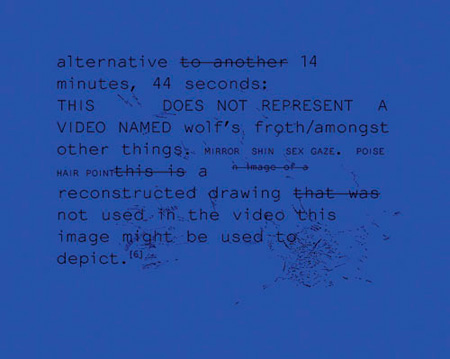Messages

Sherwin made this film as a reaction to his daughter’s discovery of language, partly inspired by the book The Child’s Conception of the World (1929) by child psychologist Jean Piaget. “A major source of inspiration for the film was Maya’s questions about the world, starting with questions to do with her perceptions of the physical world, and as she got older, questions more to do with social behaviour. These ‘innocent’ questions (apart from being almost impossible to answer) seemed to me to be of a philosophical order that challenged long-established ‘truths’ about the world. They made it clear to me that ‘knowledge’ which is hidden and acquired, supplants raw perception in many areas of our understanding (we learn to ‘see’ the table as square, not trapezoid).” (GS)
Hardwood process

“A hand-made, diary film generated from alternative processing techniques, chemical treatments, and optical & contact printing. A history of scarred surfaces, an inquiry, and an imagining: for the marks we see and the marks we make, for the languages we can read and for those we are trying to learn. Written in the scratches on the floors, the scars on the hands, and the chemical etchings into the film emulsion, these languages of experience are unstable ones, their vocabularies constantly shifting with the passage of time.” (DG)
Wolf's Froth/Amongst Other Things

A fascinating, disjunctive conundrum of language, image and sound, whose covert syntax refuses to be unpicked. A quote by filmmaker Hollis Frampton might be appropriate here: “It is as though the formation of the meaningful had some ultimate chemical origin, ‘parts of speech’ combine into propositional molecules through electrovalent attraction, or, where that attraction is lacking, remain in solution as free radicals. If art has had a scientific mission, we find it in the exposure of such mechanisms, in a nonlinear display of the OCCASIONS of meaning. For meaning is not, for image or word, in things; it is in people”.